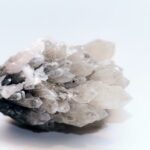Unveiling the Geographic Distribution: Where Are Emeralds Found? Glistening with a mesmerizing green hue, emeralds have captivated the hearts of jewelry enthusiasts for centuries. But have you ever wondered where these enchanting gemstones originate from? Brace yourself for an enigmatic journey into the depths of the Earth’s crust as we embark on a quest to unravel the secrets behind the geographical distribution of emeralds. Join me, a seasoned geologist with a profound understanding of gemstone exploration and mining, as we delve into the hidden corners of our planet to discover the breathtaking locations where these precious gems are found.

Where Are Emeralds Found?
Emeralds, the captivating green gemstones, have a fascinating origin and are found in various locations worldwide. Let’s embark on a journey to unveil the mysterious geographic distribution of emeralds and discover where these precious gemstones can be found.
The History of Emeralds
Emeralds have a rich historical significance, with evidence of mining dating back to ancient times. It is believed that emerald mining was first practiced in Egypt, India, and Austria. These vibrant gemstones were highly valued and adorned by royalty and the elite. Even today, emeralds are regarded as a traditional birthstone for May and the gemstone for the astrological sign of Cancer.
The Emerald Journey
Emeralds have continued to captivate us throughout the centuries. From ancient civilizations to modern-day mining operations, their allure remains strong. So, where exactly can you find these mesmerizing gemstones?
1. United States:
Emeralds have been discovered in various locations across the United States. Some notable states include Connecticut, Montana, Nevada, North Carolina, and South Carolina. These locations boast emerald deposits that have attracted prospectors and gemstone enthusiasts alike.
2. Canada:
In 1998, stunning emeralds were unearthed in the Yukon Territory of Canada. With their unique green hues and exceptional clarity, these Canadian emeralds have become a sought-after treasure for gem collectors and jewelry connoisseurs.
Apart from these specific regions, emeralds can also be found in other parts of the world, such as Colombia, Brazil, Zambia, and Afghanistan. Each location imparts its own geological characteristics, giving rise to emerald deposits of distinct quality and beauty.
Unveiling Geological Formations
Emeralds are formed in specific geological settings where the right conditions converge. These gemstones are a variety of the mineral beryl, renowned for their striking green color, which comes from trace amounts of chromium or sometimes vanadium. The primary factor contributing to the formation of emeralds is the presence of hydrothermal fluids in the Earth’s crust. These fluids interact with the right combination of rocks and minerals, creating the ideal environment for emerald formation.
But what exactly makes these geological formations so special?
Emeralds are typically found in pegmatite veins, schist, and other metamorphic rocks. These formations are a result of intense pressure and heat deep within the Earth. As the hydrothermal fluids flow through these structures, they deposit minerals, including beryl, which eventually crystallize to form emeralds. The enthralling green color of emeralds is further accentuated by the presence of other elements within the crystalline structure.
Pros and Cons of Emerald Mining
Like any mining endeavor, emerald mining presents its own set of pros and cons. Let’s take a closer look at what they are:
Pros:
– Emerald mining provides opportunities for employment, helping boost local economies and livelihoods in mining communities.
– The extraction and trade of emeralds contribute to the global gemstone market, enabling the creation of stunning jewelry pieces that are treasured by many.
– Mining operations often implement environmental management practices to mitigate the impact on the surrounding ecosystems.
Cons:
– The mining process can lead to environmental degradation if not carried out responsibly. This includes deforestation, soil erosion, and water pollution.
– Working in mines can be hazardous, posing risks to the health and safety of miners.
– Gemstone mining, including emerald mining, can sometimes be associated with social issues, such as artisanal mining practices, labor rights, and fair trade concerns.
Understanding Emerald Grading
Emeralds are graded based on four paramount factors: color, clarity, cut, and carat weight. Among these criteria, color is of utmost importance and plays a significant role in determining the value and desirability of an emerald. The most prized emeralds exhibit a vibrant green hue, ranging from yellow-green to blue-green, with a deep and vivid color saturation.
Clarity, although considered secondary to color in emerald grading, also affects the overall quality. Emeralds often contain natural inclusions and surface-breaking fissures, referred to as “jardin” (the French word for garden), which can add character and uniqueness to the gemstone.
Treating Emeralds for Clarity and Stability
It is vital to note that most emeralds undergo treatments to enhance their clarity and stability. Emeralds are commonly treated with oils or other liquids to reduce the visibility of inclusions and improve their overall appearance. This treatment process helps bring out the true beauty of the gemstone, making it more visually appealing to the beholder.
Crafting Emeralds into Masterpieces
Once emeralds have been extracted, they are then transformed into exquisite jewelry pieces and other ornamental items. Emeralds are most commonly cut in cabochon form, which showcases the gemstone’s natural shape and color. Additionally, emeralds are often given an oval or rectangular emerald cut, allowing the gemstone to sparkle and shine when it catches the light.
In Conclusion
Emeralds, with their alluring green beauty and historical significance, have been treasured for centuries. These captivating gemstones can be found in various locations worldwide, including the United States, Canada, Colombia, Brazil, Zambia, and Afghanistan. Geologically, emeralds are formed under specific conditions that involve the interaction of hydrothermal fluids with the right combination of rocks and minerals. As with any mining industry, emerald mining has its pros and cons, and the grading of emeralds is based on color, clarity, cut, and carat weight.
Now that we have unveiled the fascinating geographic distribution of emeralds, this captivating gemstone will forever have a place in our hearts and adornment. So, the next time you gaze at an emerald, remember the hidden wonders of its origin and the remarkable journey it has taken to captivate us all.
Emeralds have long been associated with beauty, luxury, and elegance. But did you know that there are some truly fascinating facts about emeralds? From their ancient origins to their mystical properties, exploring the world of emeralds can be a captivating journey. If you’re curious to learn more, check out some of the interesting facts about emeralds here. You’ll be amazed by the stories behind these mesmerizing gemstones!
Emerald Mining: A Thrilling Quest for a Precious Gemstone
[youtube v=”d8_J8YgxxLQ”]
I Mined A Real Emerald: The Journey to Finding a Priceless Gem
Emerald mining has a long and fascinating history, dating back to ancient times in Egypt, India, and Austria. It is a pursuit that has captivated the hearts of adventurers and gem enthusiasts throughout the ages. One such adventure took place as a determined individual embarked on a quest to mine a real emerald, defying the boundaries of time and distance. This is the thrilling story of how a chance encounter with a perfect emerald ring led to a remarkable adventure spanning 600 miles.
The journey began with a simple desire to find an affordable emerald ring for the narrator’s mother’s upcoming birthday. However, faced with the exorbitant price of the desired item, the protagonist decided to take matters into their own hands. Armed with determination and a sense of adventure, they embarked on a nine-hour drive from Buffalo, New York to Hindi, North Carolina, home to the only public emerald mine in the country.
Upon arrival at the Emerald Hollow mine, preparations were quickly made before the mining expedition began. The narrator signed in and took a moment to explore the surroundings, building excitement for the task at hand. Armed with a gold pickaxe, they began their relentless pursuit of uncovering a precious emerald. Hours of non-stop mining yielded minimal progress and the realization that a more effective tool was necessary to penetrate the tough terrain.
Undeterred by the lack of success, the narrator decided to trade some fake emeralds with a local villager for a new and improved diamond pickaxe. Equipped with this upgraded tool, the mining efforts intensified. With the assistance of two experienced Minecraft players who were persuaded to join the quest, the team’s combined strength increased threefold. Each swing of the pickaxe brought them closer to their goal, fueled by the urgency of the approaching birthday deadline.
Amidst the arduous mining process, there were moments of encouragement. The discovery of white quartz, a promising sign as emeralds are often found in proximity to black mica and quartz, filled the team with renewed hope. The excitement grew as they continued mining, but disappointment struck when it became evident that the quest couldn’t be completed alone. Determined to succeed, the narrator enlisted the help of experienced miners and sought their advice. Unfortunately, even the seasoned miners had not been fortunate enough to unearth an emerald.
Undeterred, the narrator and their companions set off for a new location, the Emerald Crabtree mine. Located deep in the boonies, this site had become known for recent discoveries of beautiful emeralds found in massive dumps of rocks from an abandoned mine. Excitement filled the air as they explored the location, finding evidence of mica, quartz, and feldspar. However, the ultimate prize remained elusive.
Drawing inspiration from a geology enthusiast with a decade of experience, the team implemented a new strip mining technique. Rocks that appeared to contain emeralds were carefully washed using a sifting screen. Hours turned into moments as they persisted, driven by unwavering determination. But just as success seemed within reach, the weather took a turn for the worse, forcing a temporary retreat.
Seeking shelter from the brewing storm, doubts and uncertainty began to cloud the protagonist’s mind. The approaching deadline for the birthday gift only added to the pressure. However, with a team member’s reminder that most gamblers quit right before striking it big, the flame of hope was reignited. And so, with thunder rumbling overhead, the protagonist returned to the mine, determined to dig deeper.
Clouded by the storm and fatigue, a glimmer of hope suddenly appeared. An emerald! Excitement and disbelief filled the air as they realized the culmination of their tireless efforts. The deep green gem shone brightly, a testament to their perseverance and unwavering belief. It was a moment of triumph, a victory against all odds.
Upon returning to New York, the emerald was carefully cut and placed into an exquisite piece of jewelry. The gift, a symbol of love and determination, was a truly extraordinary present for the narrator’s mother. The tale of this adventure serves as a reminder that sometimes the greatest rewards come from pushing through adversity and never giving up on one’s dreams.
Through this remarkable journey, we catch a glimpse of the thrilling world of emerald mining. The pursuit of these precious gemstones encompasses a rich historical significance, their allure spanning across continents and centuries. From ancient civilizations to modern-day adventurers, emerald mining has left its mark on the world. Today, emeralds can be found in various locations, including the United States, Canada, Colombia, Brazil, Zambia, and Afghanistan.
Mining for emeralds involves a complex process influenced by geological formations such as pegmatite veins and schist. The interaction of hydrothermal fluids with rocks and minerals creates the perfect conditions for emerald formation. This geological alchemy results in the stunning green gemstones that captivate our hearts.
The world of emerald mining, like any industry, has its advantages and disadvantages. On one hand, it provides employment opportunities and contributes to the gemstone market. Environmental management practices are implemented to mitigate the impacts of mining. On the other hand, mining can lead to environmental degradation, pose health and safety risks for miners, and give rise to social issues that need to be addressed.
When it comes to evaluating the quality of emeralds, several factors come into play. Color, clarity, cut, and carat weight are the main criteria used for grading emeralds. Among these, color is considered the most significant factor. The intensity and richness of the green hue greatly influence the value and desirability of an emerald.
In the journey of an emerald from mine to market, it is common for gemstones to undergo treatments. These treatments aim to enhance the clarity and stability of the emeralds for jewelry purposes. Examples include the oiling of emeralds to minimize the appearance of fractures and improve their overall appearance.
Emeralds, with their captivating beauty and unique characteristics, are often crafted into exquisite jewelry pieces. They are commonly cut in a cabochon form or given an oval or rectangular emerald cut. These cuts showcase the gem’s natural beauty and allow it to radiate its vibrant green hue.
The story of the narrator’s quest to mine a real emerald and the eventual success serves as a testament to the allure and thrill of the emerald mining world. It is a reminder that determination, perseverance, and a touch of adventure can lead to extraordinary achievements.

FAQ
Question 1
Where are emeralds found?
Answer 1
Emeralds have been found in various locations around the world. In the United States, emeralds can be found in states such as Connecticut, Montana, Nevada, North Carolina, and South Carolina. They were also discovered in the Yukon Territory of Canada in 1998. Furthermore, emeralds have a long history of being mined in Ancient Egypt, India, and Austria.
Question 2
What is the origin of the word “emerald”?
Answer 2
The word “emerald” is derived from Vulgar Latin and Ancient Greek. It is believed to have originated from the Latin word “smaragdus” or the Greek word “smaragdos.”
Question 3
How are emeralds graded?
Answer 3
Emeralds are graded using four parameters: color, clarity, cut, and carat weight. The color of an emerald is the most important factor in its grading, with a deep green hue being highly desirable. Clarity, which refers to the presence of inclusions or flaws, is considered a close second in the grading of emeralds. The cut and carat weight also contribute to the overall grading of an emerald.
Question 4
What is the typical color of emeralds?
Answer 4
Emeralds typically range in color from yellow-green to blue-green, with the primary hue being green. The intensity and saturation of the green color can vary, resulting in a wide range of shades and tones.
Question 5
Are emeralds treated in any way?
Answer 5
Yes, most emeralds are treated with oils or other liquids to enhance their clarity and stability. This treatment is commonly done to minimize the visibility of inclusions and improve the overall appearance of the gemstones. It is important to note that these treatments are accepted in the industry as long as they are disclosed to the buyer.
- Sept 31 Myth: Unveiling Calendar Secrets - March 18, 2025
- How Long & Till December 18, 2025: Accurate Countdown Guide - March 18, 2025
- Discover Japanese Artists: A Complete History - March 18, 2025
















